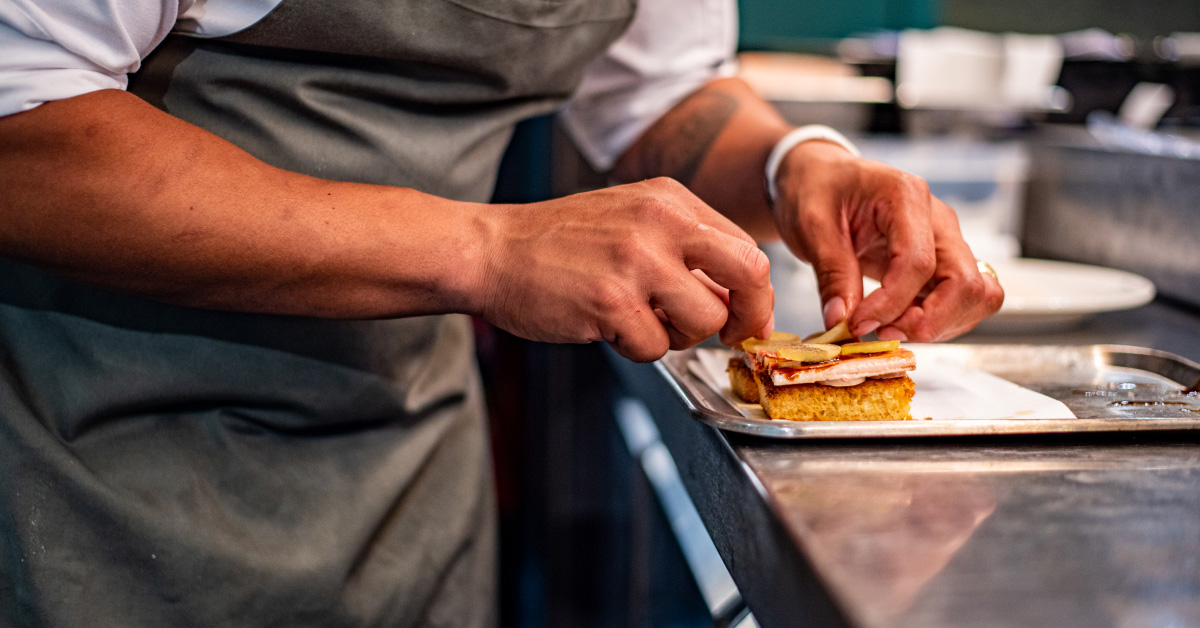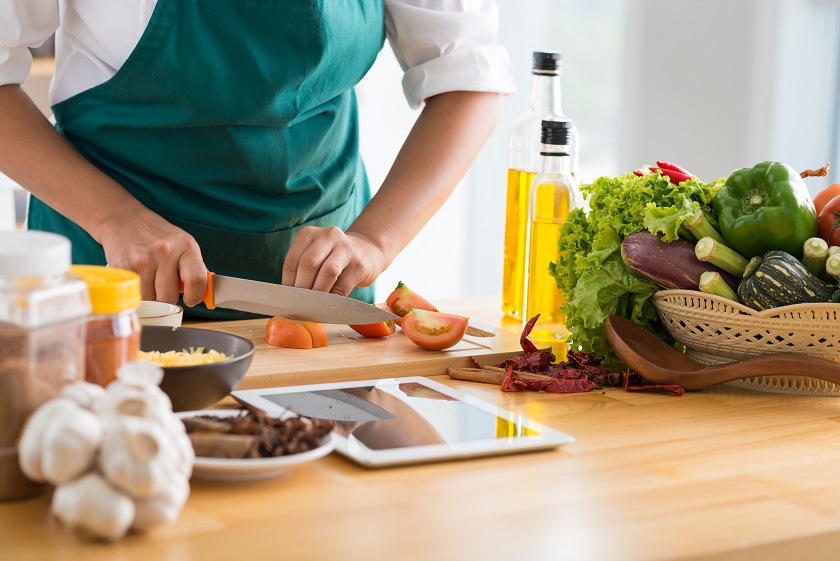
Discover the secrets to becoming a master in the kitchen with our guide on unleashing the chef within.
In this article, we will explore five essential culinary techniques that every aspiring chef should know.
From perfecting your knife skills to mastering the art of sautéing, roasting, grilling, and braising, you will gain the knowledge and confidence needed to create restaurant-quality meals in the comfort of your own home.
Get ready to take your cooking skills to the next level and impress your guests with your culinary prowess.
Knife Skills
Mastering knife skills is essential for any aspiring chef to efficiently and safely handle ingredients in the kitchen. One crucial aspect of knife skills is knife sharpening. Keeping your knives sharp ensures precise and controlled cuts, minimizing the risk of accidents. Regularly sharpening your knives with a sharpening stone or honing steel helps maintain their sharpness, ensuring a smooth cutting experience.

In addition to knife sharpening, understanding different chopping techniques is vital. The way you chop ingredients can affect their texture, flavor, and presentation. Learning techniques like the julienne, dice, and chiffonade can enhance your culinary skills and result in professional-looking dishes. These techniques require proper grip, hand positioning, and movement, which contribute to both efficiency and safety in the kitchen.
Sautéing
To excel in the culinary world, it is essential to have a thorough understanding of sautéing, a versatile cooking technique that requires precise heat control and quick movements. Mastering the art of sautéing involves a few key tips and tricks that can help you perfect this essential cooking technique.
First, ensure that your pan is hot before adding the ingredients to prevent them from sticking. Use a combination of oil and butter for added flavor and richness. When sautéing, it is important to continuously move the ingredients around the pan to evenly cook them and avoid burning.
Elevating your dishes with sautéed ingredients is a great way to add depth and flavor. Incorporate sautéed elements into your recipes by using them as toppings, fillings, or incorporating them into sauces and dressings. Get creative and experiment with different ingredients and flavor combinations to take your dishes to the next level.
Roasting
Roasting is a fundamental culinary technique that involves cooking food in an oven or over an open flame to achieve a rich, caramelized exterior and tender interior.
When it comes to roasting, mastering the art of achieving perfectly crispy vegetables is a must. To do this, make sure to cut the vegetables into uniform pieces to ensure even cooking. Toss them in oil and seasonings, then spread them out in a single layer on a baking sheet. Preheating the oven to a high temperature, around 425-450°F, will help to create that desired crispiness.
For succulent meats, the secret lies in proper preparation. Start by patting the meat dry and seasoning it generously. Use a roasting rack to elevate the meat, allowing for even heat distribution. Keep a meat thermometer handy to ensure it reaches the desired internal temperature.
Grilling
Grilling is an essential culinary technique that involves cooking food over an open flame or hot coals to impart a smoky flavor and create delicious charred marks. Whether you're grilling steak or vegetables, mastering the right techniques is key to achieving perfect results.
When it comes to grilling steak, start by preheating the grill to medium-high heat. Allow the steak to reach room temperature before placing it on the grill. To achieve those beautiful grill marks, make sure to only flip the steak once during cooking and avoid pressing down on it. Use a meat thermometer to ensure the steak is cooked to your desired level of doneness.
When grilling vegetables, it's important to choose the right ones that are suitable for grilling, such as bell peppers, zucchini, or corn. Preheat the grill to medium heat and lightly oil the vegetables to prevent sticking. Cut them into even-sized pieces for even cooking. Grill the vegetables until they are tender with a slight char, and remember to turn them occasionally to prevent burning.
Braising
Braising is a fundamental culinary technique that involves cooking food slowly in a liquid, resulting in tender and flavorful dishes. It is one of the best-kept slow cooking secrets, perfect for creating succulent and delicious meat dishes.
The process involves searing the meat to lock in the flavors, then simmering it in a flavorful liquid, such as broth, wine, or sauce. This slow cooking method allows the meat to slowly break down and absorb the flavors of the liquid, resulting in a tender and juicy texture.
Braising is not only a great way to infuse flavors into meat, but it also helps to tenderize tougher cuts of meat, making them more enjoyable to eat.
Frequently Asked Questions
How Do I Properly Season Meat Before Roasting It?
Properly seasoning meat before roasting is crucial to enhance its flavor and ensure a delicious end result. By using techniques such as dry rubs, marinades, and brining, you can infuse the meat with flavor and improve its tenderness.
Can I Use a Grill Pan Instead of an Outdoor Grill for Grilling?
When considering whether to use a grill pan or an outdoor grill for grilling, it is important to weigh the pros and cons. Grilling indoors requires proper ventilation and safety precautions, but can be achieved using a grill pan. To achieve grill marks on a grill pan, preheat it on high heat and ensure the food is dry before placing it on the pan. Some delicious recipes for indoor grilling include grilled vegetables, chicken, and shrimp.
What Is the Best Type of Meat to Braise?
The best cuts of meat to braise are tougher, less expensive cuts such as chuck roast, short ribs, and brisket. These cuts benefit from the slow, moist cooking method of braising, resulting in tender and flavorful meat.
How Do I Know When My Sautéed Vegetables Are Done Cooking?
To determine if sautéed vegetables are done cooking, look for signs of doneness such as tender texture and caramelization. Test for tenderness by piercing with a fork. Adjust cooking time as needed to achieve desired results.
Are There Any Specific Safety Precautions I Should Take When Using a Chef's Knife for Knife Skills?
When using a chef's knife for knife skills, it is crucial to prioritize safety. Proper knife grip and handling techniques are essential to minimize the risk of accidents and ensure a safe cooking experience.
 Family Craft ProjectsHome ImprovementCooking and BakingReuse and RecycleDIY GiftsEco-Friendly ProjectsDIY Home SolutionsSeasonal ActivitiesFun and GamesLearn TogetherPrivacy PolicyTerms And Conditions
Family Craft ProjectsHome ImprovementCooking and BakingReuse and RecycleDIY GiftsEco-Friendly ProjectsDIY Home SolutionsSeasonal ActivitiesFun and GamesLearn TogetherPrivacy PolicyTerms And Conditions
